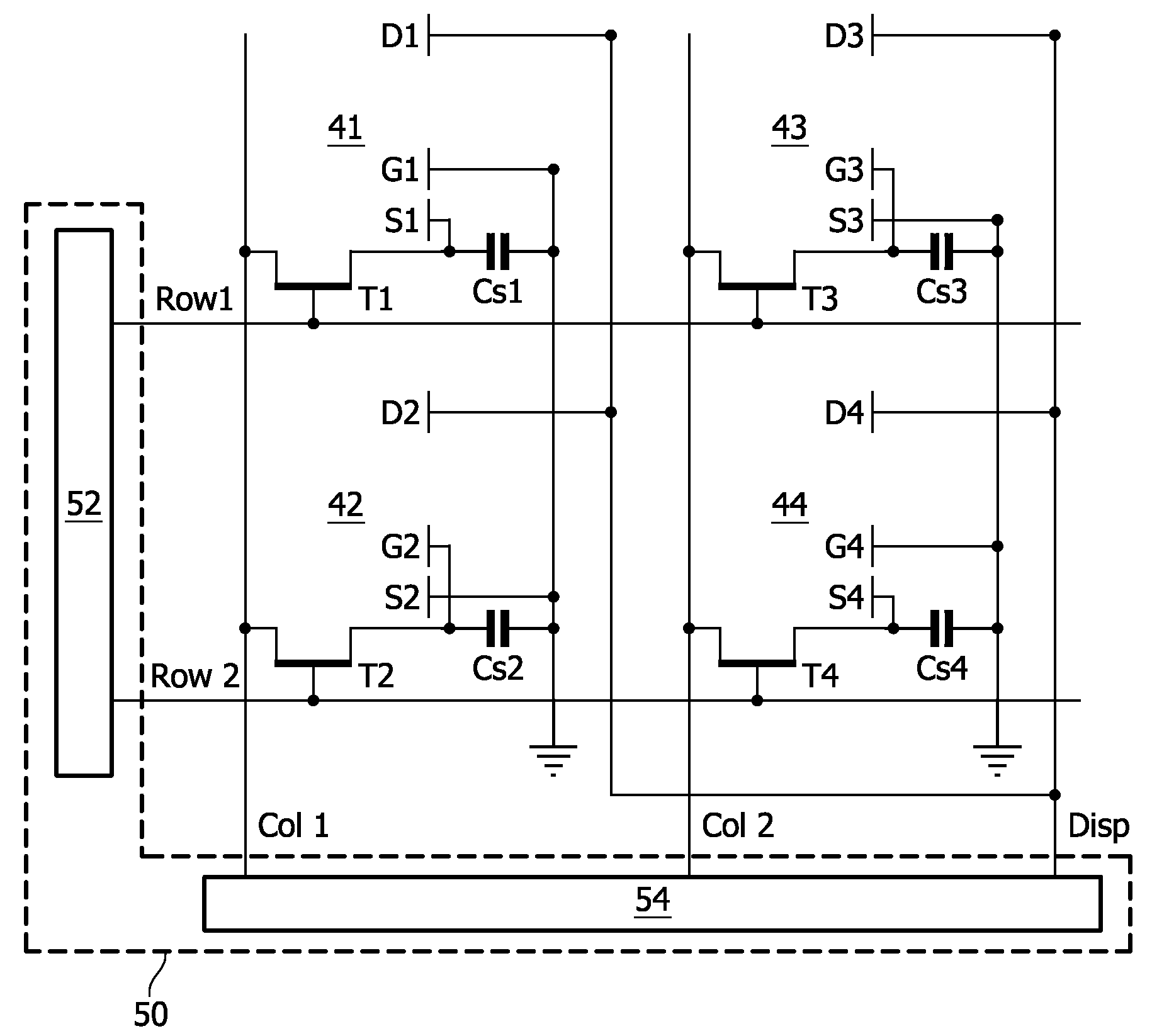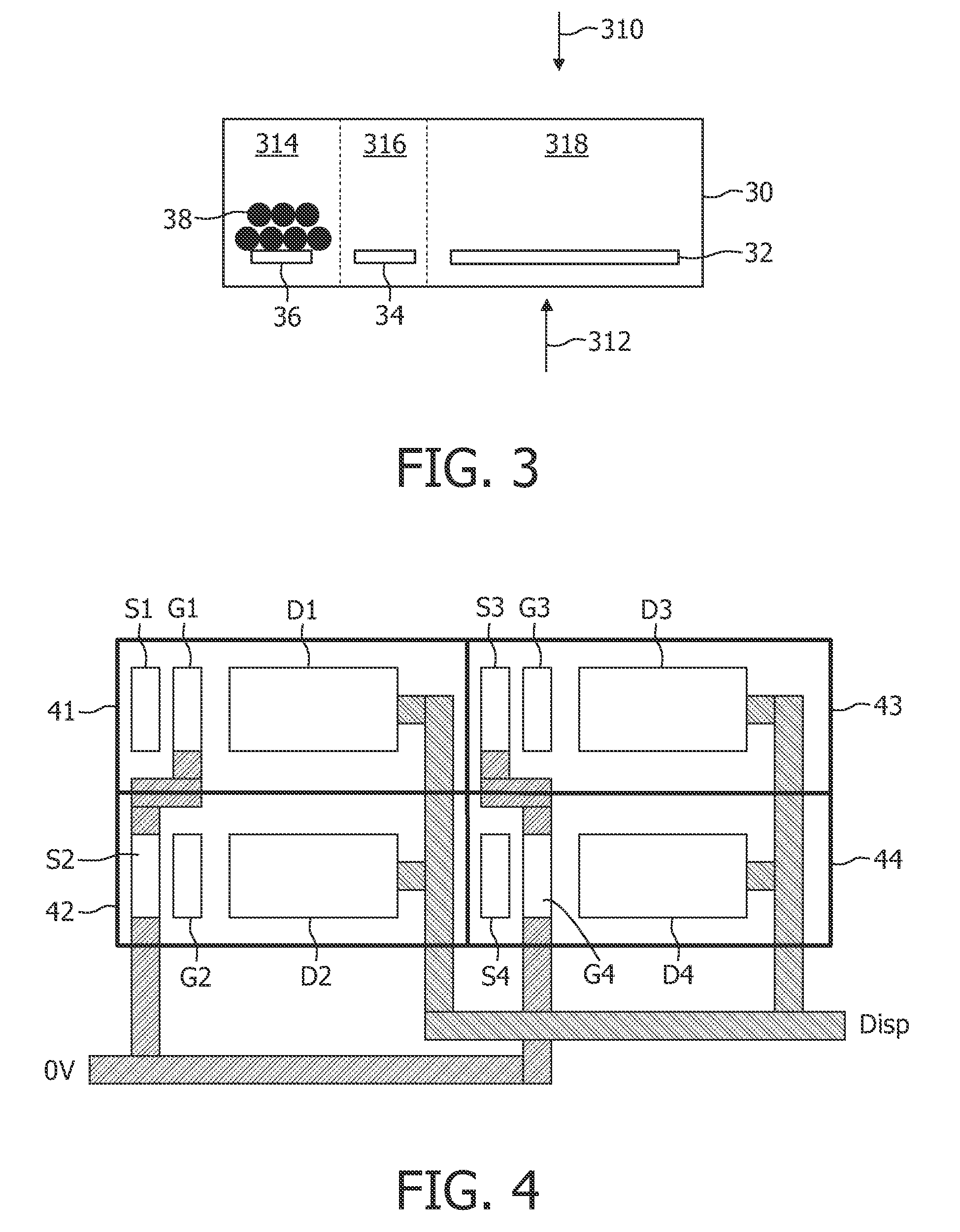Moving particle display device
a display device and moving particle technology, applied in static indicating devices, error detection/prevention using signal quality detectors, instruments, etc., can solve the problems of significant current flowing along the discharge line and large capacitance of pixels
- Summary
- Abstract
- Description
- Claims
- Application Information
AI Technical Summary
Benefits of technology
Problems solved by technology
Method used
Image
Examples
Embodiment Construction
[0039]FIG. 1 shows a flow diagram of a method for driving a moving particle display device, which can be used for the display device of the invention. The moving particle display device typically has hundreds or thousands of moving particle cells, each of which form a first or second cell of a pair. Each cell comprises movable charged particles, and has a storage region into which at least some of the movable charged particles may be moved, a gate region into which at least some of the movable charged particles may be moved, and a display region into which at least some of the movable charged particles may be moved.
[0040]A cell's display region is the region of the cell that determines the cell's optical state. The optical state is determined by the number of (movable charged) particles that are within the cell's display region. The cell's gate region is a region of the cell from which particles are moved into the display region. The cell's storage region is a region where the cell'...
PUM
| Property | Measurement | Unit |
|---|---|---|
| transparent | aaaaa | aaaaa |
| transparent | aaaaa | aaaaa |
| voltage | aaaaa | aaaaa |
Abstract
Description
Claims
Application Information
 Login to view more
Login to view more - R&D Engineer
- R&D Manager
- IP Professional
- Industry Leading Data Capabilities
- Powerful AI technology
- Patent DNA Extraction
Browse by: Latest US Patents, China's latest patents, Technical Efficacy Thesaurus, Application Domain, Technology Topic.
© 2024 PatSnap. All rights reserved.Legal|Privacy policy|Modern Slavery Act Transparency Statement|Sitemap



